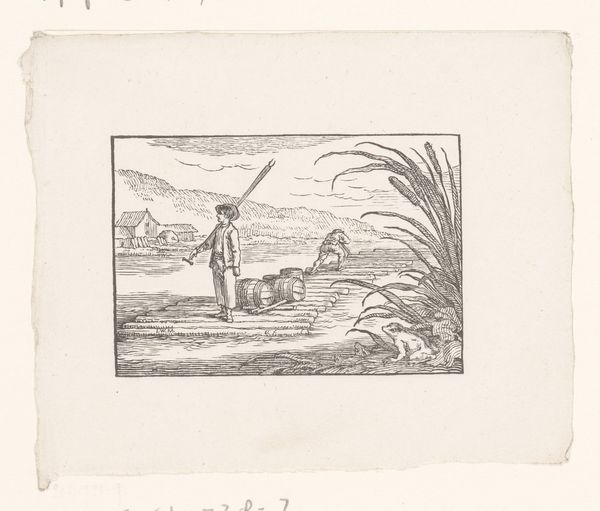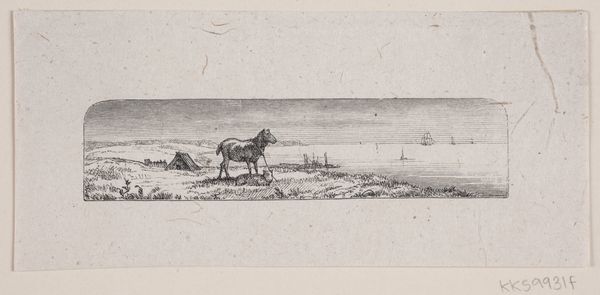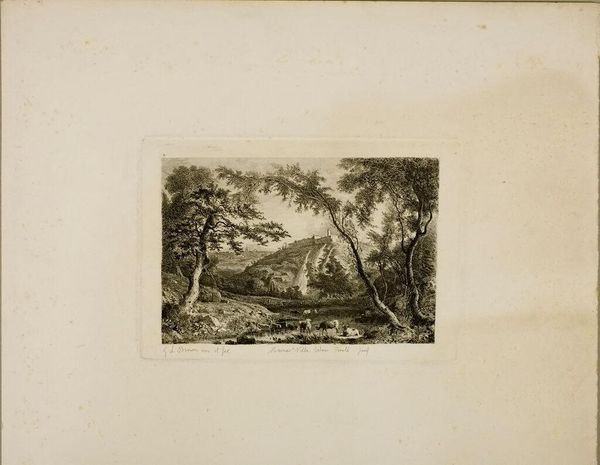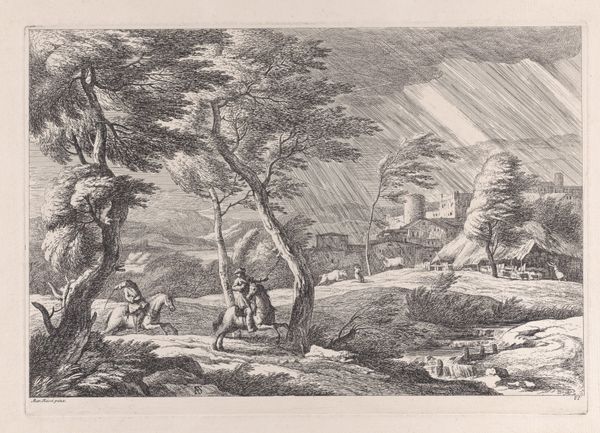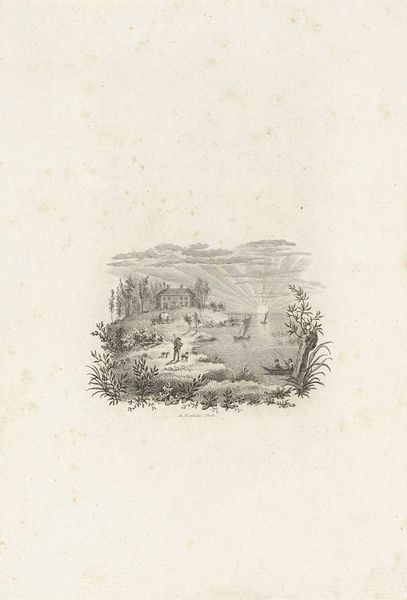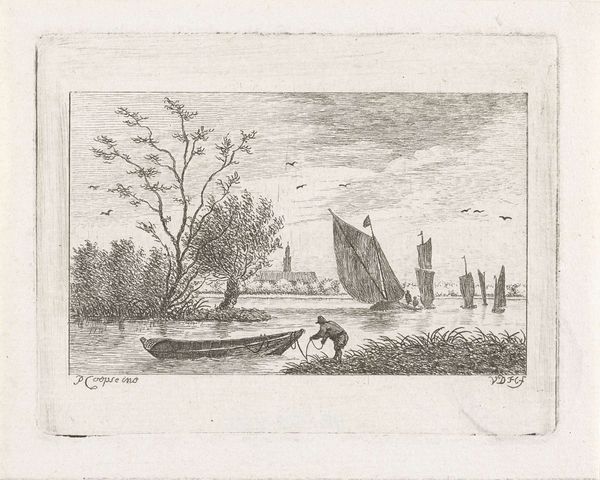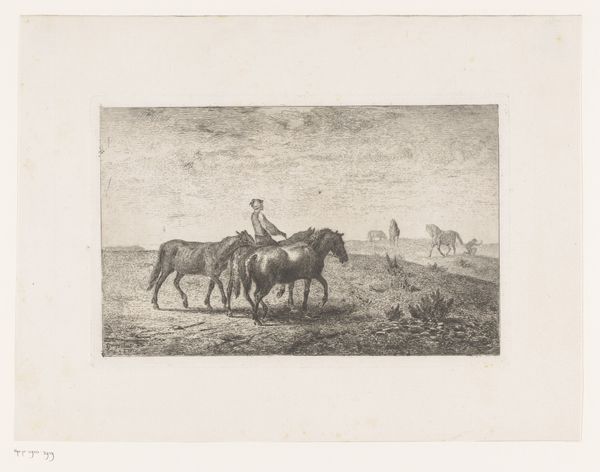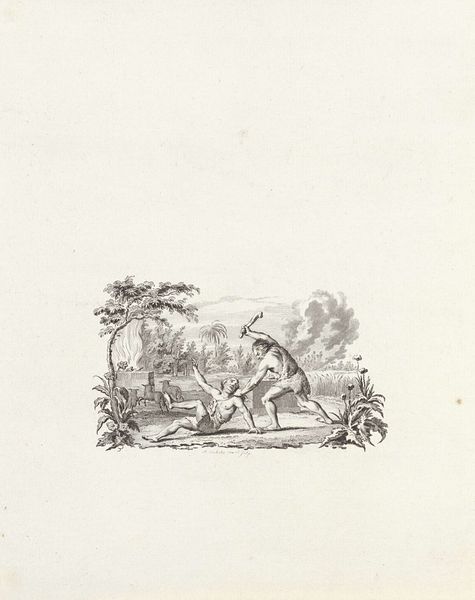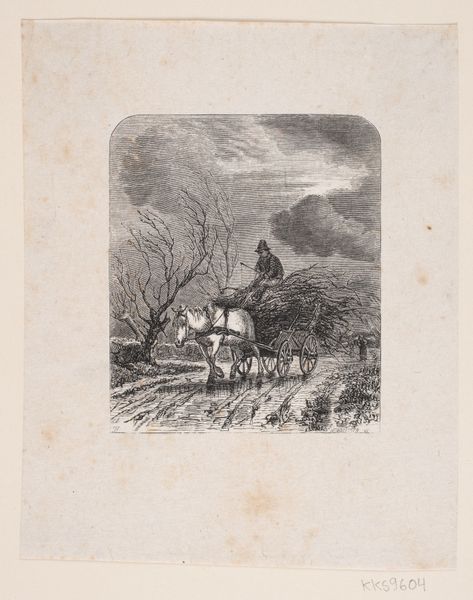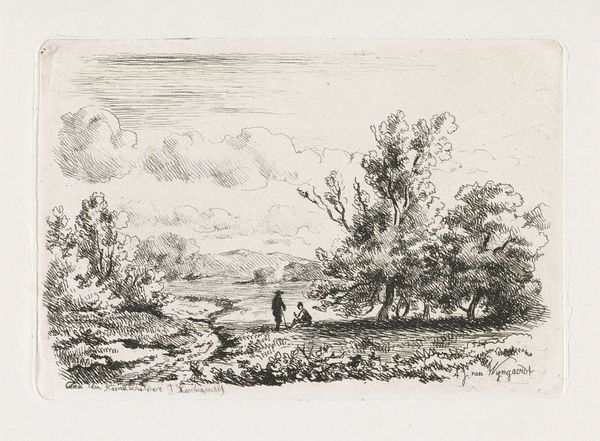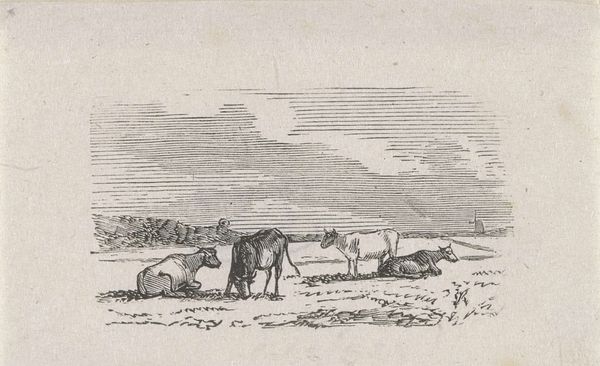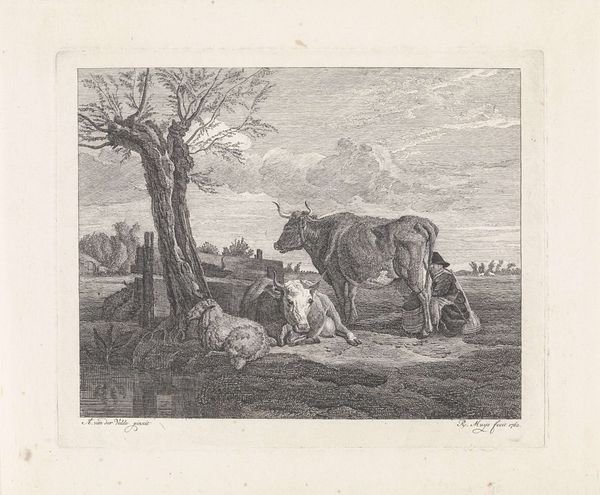
print, engraving
# print
#
landscape
#
genre-painting
#
engraving
#
realism
Dimensions: height 69 mm, width 92 mm
Copyright: Rijks Museum: Open Domain
Curator: This engraving by Isaac Weissenbruch, dating from between 1836 and 1912, is titled "Ploeger en een zaaier werkend op het land," which translates to "Plowman and a Sower Working on the Land." Editor: Immediately, I am struck by the contrast, that bold black-and-white of the engraving against the subject itself, which speaks to the heavy labor depicted here, this relentless toil. It seems fitting, somehow. Curator: I concur. The stark realism truly captures the essence of labor. Observe how Weissenbruch employs dense hatching to convey the texture of the ploughed field and the garments of the workers. The formal composition, in particular the strategic use of linear perspective drawing our eyes from the foreground toward the diffused horizon, adds a layer of depth and directs attention across the field of work. Editor: Indeed, look at the means by which the land is rendered; the hand involved with every seed broadcast, every furrow turned. It's a powerful statement about man's relationship to the soil and, consequently, a broader discourse on sustenance and survival. Consider how dependent people were on these modes of agriculture, compared to contemporary techniques where one machine accomplishes all of these stages. Curator: The subject’s bare essentials – the plowing, sowing, and sparse landscape create an intense, stark representation. Semiotically, it reduces the idea of agriculture to fundamental aspects and portrays existence by basic needs and means. Editor: Exactly! The materiality of survival is front and center. It's less about romanticizing rural life and more about acknowledging the physical realities—the work. Even in such a small format, it holds the entire story of the creation of food through strenuous processes. Curator: The lines and shading work almost mathematically to draw our eyes over the full piece. A testament to Weissenbruch's ability to work through complex subjects of man and environment so deliberately and successfully. Editor: To consider Weissenbruch's work today causes us to perhaps re-examine our disconnection with these primary means, to evaluate what has been lost in the industrialization and remove that removes people from labor itself.
Comments
No comments
Be the first to comment and join the conversation on the ultimate creative platform.
